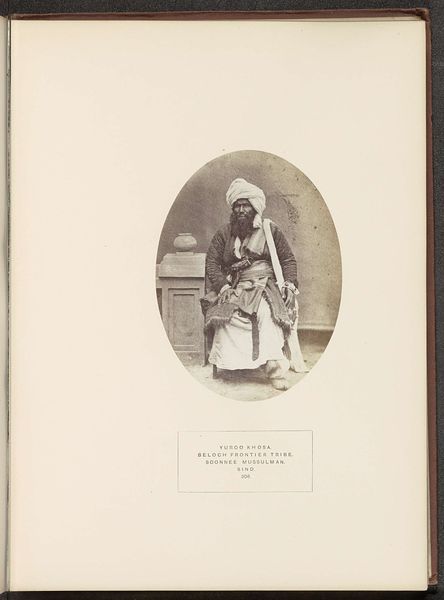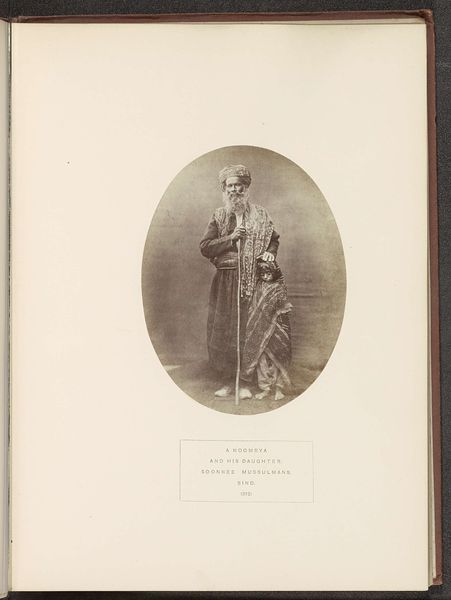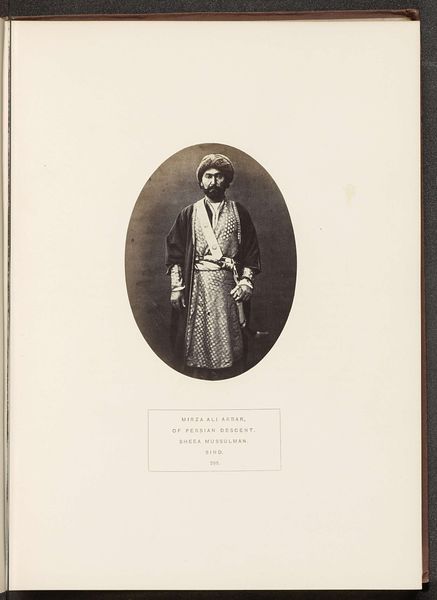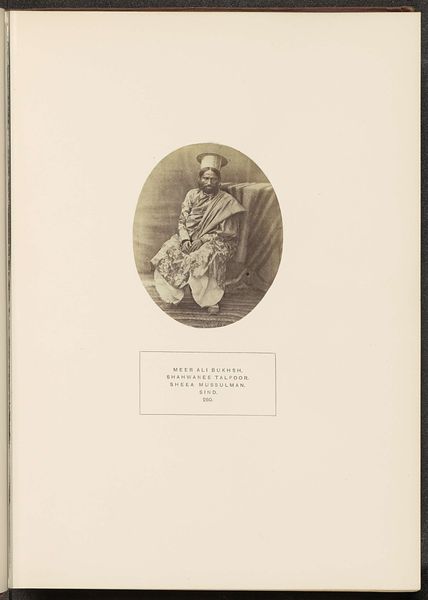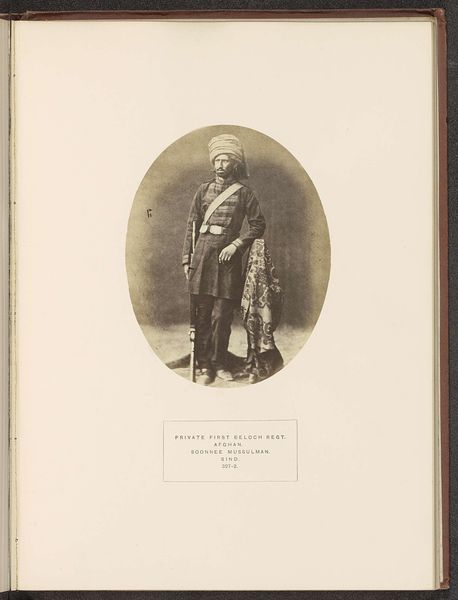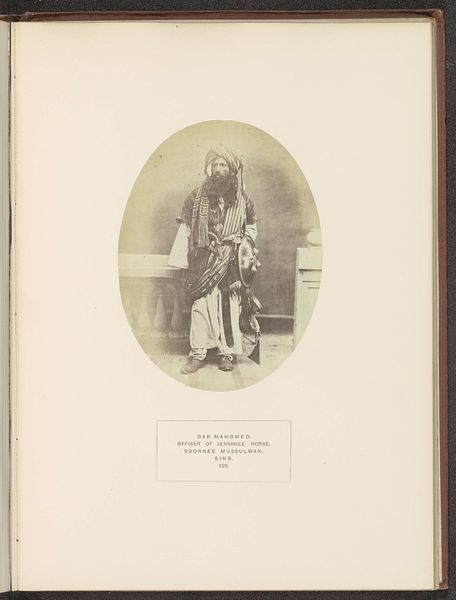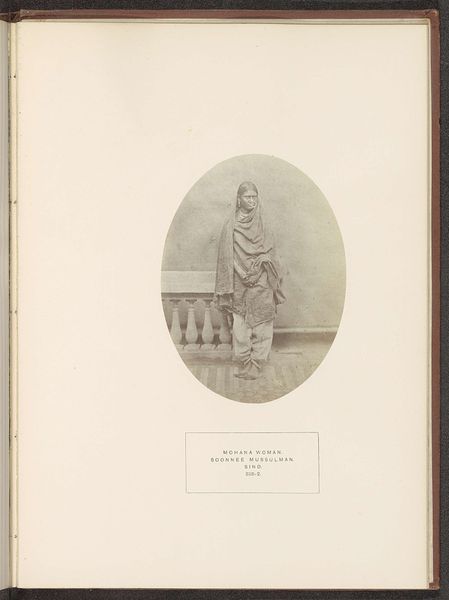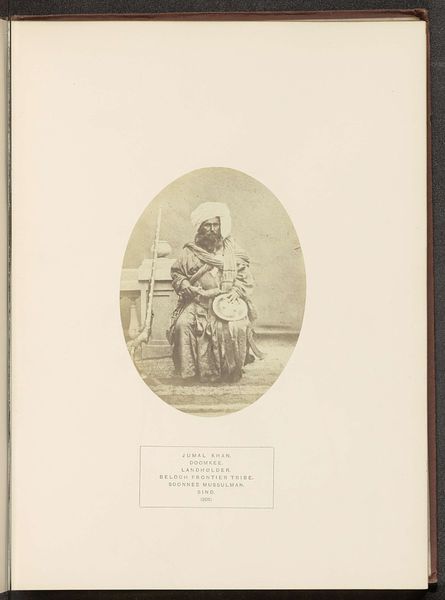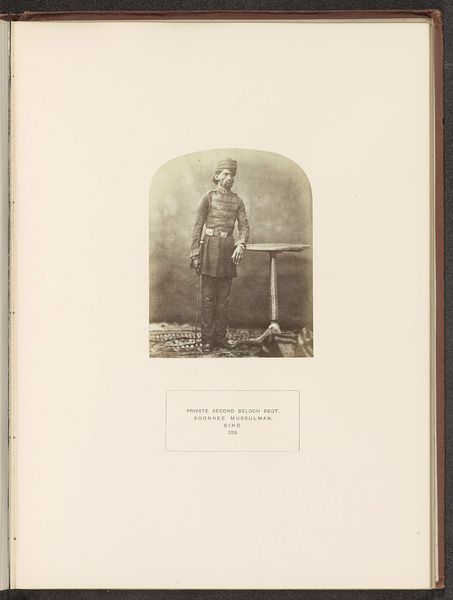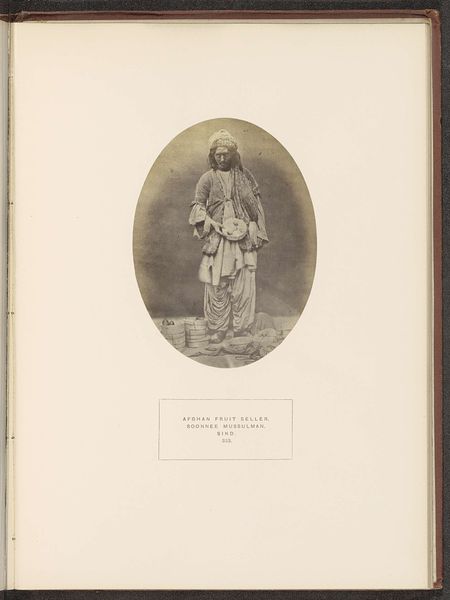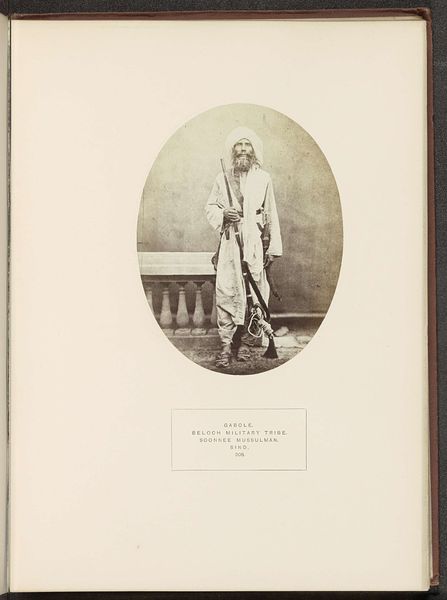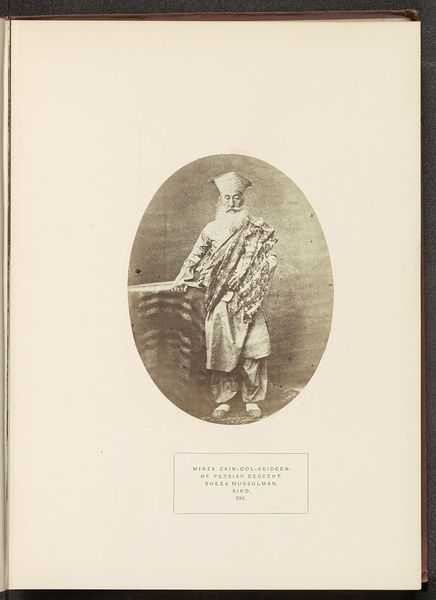
Portret van Wazeer Khan, een korporaal in het eerste Baloch regiment before 1872
0:00
0:00
print, photography, albumen-print
#
portrait
# print
#
photography
#
orientalism
#
albumen-print
Dimensions: height 146 mm, width 108 mm
Copyright: Rijks Museum: Open Domain
Editor: Here we have Henry Charles Baskerville Tanner’s photograph, "Portret van Wazeer Khan, een korporaal in het eerste Baloch regiment," created sometime before 1872, using the albumen print process. What strikes me is the sitter’s confident gaze, a defiance that seems to push back against the formality of the portrait itself. What do you see in this piece? Curator: The tension you’re picking up on is really crucial. Consider that this photograph was produced during a period of intense British colonial expansion in the Indian subcontinent. These photographic portraits were often tools of empire, meant to document and categorize people deemed ‘exotic’ or ‘other’. But look at Wazeer Khan's direct stare. Does it seem to comply with that colonial gaze? Editor: Not really, it almost feels… rebellious? Knowing the history, it's easier to read that in his expression, and maybe even his pose, which is stately but not submissive. Curator: Exactly! The "orientalism" tag is worth unpacking too. It describes the way Western artists and photographers often depicted people from the East through a lens that exoticized and, frankly, misrepresented them. So how can we view a portrait like this critically? Editor: We need to ask whose perspective is being privileged? How does the photograph participate in broader narratives of power and representation? And perhaps most importantly, does Wazeer Khan retain some agency in how he is being presented? Curator: Precisely. Thinking about identity, power, and representation – those are our key lenses. This single image can become a starting point to consider larger histories of colonialism and the power dynamics inherent in portraiture. Editor: I hadn't considered the photographer’s role in perpetuating those dynamics, or conversely, the subject's agency. Thanks! Curator: Absolutely. Thinking about these aspects allows us to delve much deeper into what a seemingly straightforward historical image is telling us.
Comments
No comments
Be the first to comment and join the conversation on the ultimate creative platform.
